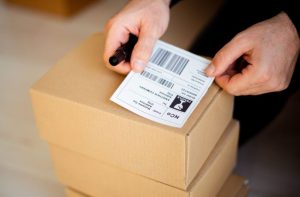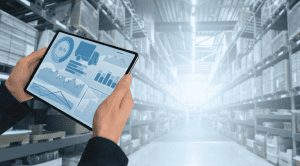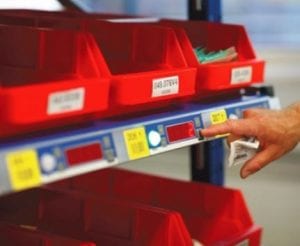Print and Apply (PandA or Labeler)
Recently, we started our “Standalone Automation” blog journey with the carton erector – see “Standalone Automation – Carton Erectors-Builders”. The next piece of standalone automation in our journey is the Print and Apply, or PandA, or labeler.
There are several ways to add a label to items inside of a warehouse: the product itself, the individual/loose cartons or items/products in full cases, labels for internal movement purposes (license plate numbers or LPNs), and shipping labels, to name a few. However, the main reason behind whichever label is used is traceability.
for internal movement purposes (license plate numbers or LPNs), and shipping labels, to name a few. However, the main reason behind whichever label is used is traceability.
Traceability – yes, the ability to trace or track – improves the visibility of the labeled items. This allows you to “see” where an item is located within your facility, track the item with scan points before it ships, and update information in your ERP/WMS if that integration exists in your system.
As discussed previously, orders out the door make companies money. However, companies looking to maximize the money brought in understand the need to improve traceability in their operations. A lack of visibility for a product/item/order adds to inaccuracies, returns, and missing inventory, all of which go against maximized revenue.
Note: While there are various ways to trace an item, the focus of this post is traceability with labels, which usually contain a barcode. One other common method for traceability is RFID tags (radio-frequency identification). Each tracking type has a specific benefit depending on your operations, and we’ll cover RFID technology in a separate post.
Labels – the deeper meaning
The deeper meaning behind the existence and use of labels can be mainly attributed to lean management.
Lean Management – like getting lean meat at the grocer, except you’re applying this concept to your business operations. The concept… “Cut the Waste”.
Cut the Waste is a general concept that can be applied uniquely for each operation and usually starts with getting organized (see Warehouse Best Practices Part I article). The next step would be labeling repetitive operations and locations for items and eliminating non-value-added or wasteful movements – to name a few.
Note: Abel Womack provides Lean Management consultation, which is a great way to start the automation process.
With lean management in mind, you would optimize the processes and placement for all items necessary to run a successful operation. This can be as rudimentary as the location of the broom and dustpan for end-of-shift cleaning. You would not only have a specific location where these items reside, but you would also label the location, so once the item is removed, it can be returned to its rightful location. The specific location for an item and the visual identification (labeling) of the item and location are how accuracies can be significantly improved.
Yes, labeling can improve accuracy!
After your company labels each sector within the large operation, and assuming you’ve moved on to Warehouse Best Practices Part II, where you’d have a WMS or similar in place, you’d be able to use labels for your products efficiently. This can be internally (LPN) or externally (shipping label), where no manual information needs to be entered any longer because you’re now using labels that get scanned. In the now close-to-perfect world, the label would be attached to all the necessary information you used to enter manually.
Why would labeling improve accuracy?
- When done correctly, you’d have a dimensionalizer (technology that can grab dimensions and weights and store that information in your system).
- Once the item is received into your system, you’ll now have an identifier (or reuse the supplier’s identifier) for the SKU (stock-keeping unit).
- With the SKU ID and dimension/weight information, you can now print and apply a label for that item or product. All the item information is now in the product label barcode.
- The system would then tie the product label to a location label, which is how you now can say this item/product is in this location, and operators (or automation) shouldn’t have to spend as much time searching for products as when performed manually.
- When picking a product, this can now be done automatically, whether with scan guns, pick to light/voice, AMRs or AGVs, or any combination.
- Because of all the scans and confirmations, the operator is much less likely to make errors, and those improvements add to accuracy and efficiency because you’re not wasting time.
Accuracy improvements, dedicated locations, efficient moves, and both operator and customer satisfaction are just a few of the gains that can be recognized with just the move to labeling more of your operations.
How to know which solution is next for your company
Warehouse Best Practices Part I & II are always good starting points.
If you’d prefer to stay as hands-off as possible, there are companies that can help with these initial processes. Abel Womack has a great Lean Management Consulting team that ensures your company performs as efficiently as possible. Or contact our Automation team to assist with automation-specific consulting and uncover the best next step for your operations.
Abel Womack has a history of relationship building, outstanding service, and experience automating facilities new to automation and those with several phases of automation as part of their long-term plans. Let us bring your operations closer to those long-term plans today.




Leave a Reply
You must be logged in to post a comment.